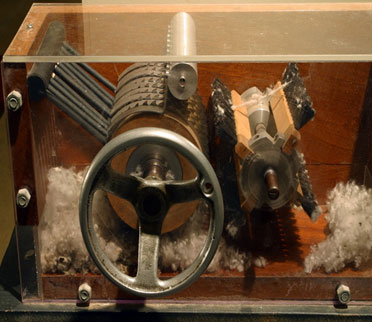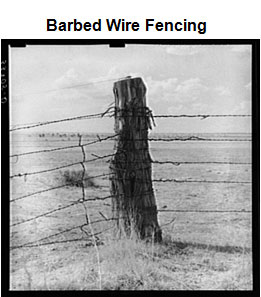
Source: BTLMAP, Texas Beyond History, University of Texas
Source: QhanahParker, Texas Beyond History, University of Texas at Austin
During Reconstruction, Texas entered an era where agriculture, namely cotton, drove the economy. The rise of cattle and railroad industries also occurred during this era.
Cotton production has always been important to Texas’s economy. Cotton was the main crop of the Texas economy during the Civil War. During that time, cotton production depended heavily on slave labor; many slaves were moved to Texas from other southern states to participate in the production.
After the Civil War, cotton production became even more important to Texas’s economy. Production of cotton increased when new laborers came to Texas. Additionally, a wave of Mexican immigrants came to Texas in the years after the war. These immigrants replaced the African-American slave labor that no longer existed in Texas.
Click on the images below to learn more about other factors that caused an increase in cotton production from the Reconstruction Era to the early 20th century.

Source: BTLMAP, Texas Beyond History, University of Texas
Source: QhanahParker, Texas Beyond History, University of Texas at Austin
American-Indian Removal
In 1874, the Red River War between the U.S. Army and several American–Indian groups (including the Comanche, Cheyenne, Kiowa, and Arapaho) took place in the Texas Panhandle. The U.S. Army’s plan to remove the American Indians from the Texas frontier and force them onto reservations was successful. The American Indians were fighting to recapture ancestral territory, but were eventually defeated. The American Indians, in effect, gave up their land claims. For Texas, this meant that cotton could be produced in fertile areas without fear of conflicts with American Indians.

Source: Cotton gin EWM 2007, Wikimedia
The Cotton Gin
Eli Whitney invented the cotton gin, a machine that separates the cottonseed from the fiber. The cotton gin made cotton production faster and more efficient. The invention decreased the need for slave labor.

Source: Railmap, Texas Beyond History, University of Texas at Austin
Railroads
During the Civil War, transporting cotton by the traditional routes was hampered by Union troops. Texans began to use the railroads more to transport cotton to the Texas coast for trade. By 1876, there were 1,068 miles of railroad in Texas. This increased the ability to transport cotton and other agricultural products across Texas. By 1891, there were nearly 9,000 miles of railroad tracks laid across Texas.
Railroads had a major impact on the economic growth of Texas after the Civil War. By the late 19th century, the railroad industry contributed to the migration of people moving into Texas as they migrated west. The expansion of the railroads into East Texas allowed access to lumber from the Piney Woods, creating another form of trade for the Texas economy.
The expansion of the railroads also impacted the cattle industry. Raising cattle was vital to the Texas economy. After the Civil War, Texas longhorn cattle increased in demand in the northern states. Ranchers worked harder to corral wild longhorns in order to sell them.

Source: Mid to Late 19th Century Cattle Trails, Texas Beyond History, University of Texas
Initially, cattle trails were used by Texas cattlemen to drive their cattle from various parts of Texas to markets north of the state. The expansion of the railroads in Texas allowed ranchers to transport the cattle faster, making Texas a leader in the cattle industry.

Source: Med_res, The Portal to Texas History, University of North Texas

Source: 8b21937r, Library of Congress
Barbed wire fencing was introduced to Texas in 1875. Ranchers used the invention of metal fencing wire that had sharp edges to fence in their cattle until it was time to sell.
How did the invention of the barbed wire fence lead to the growth of the cattle industry in the Texas?